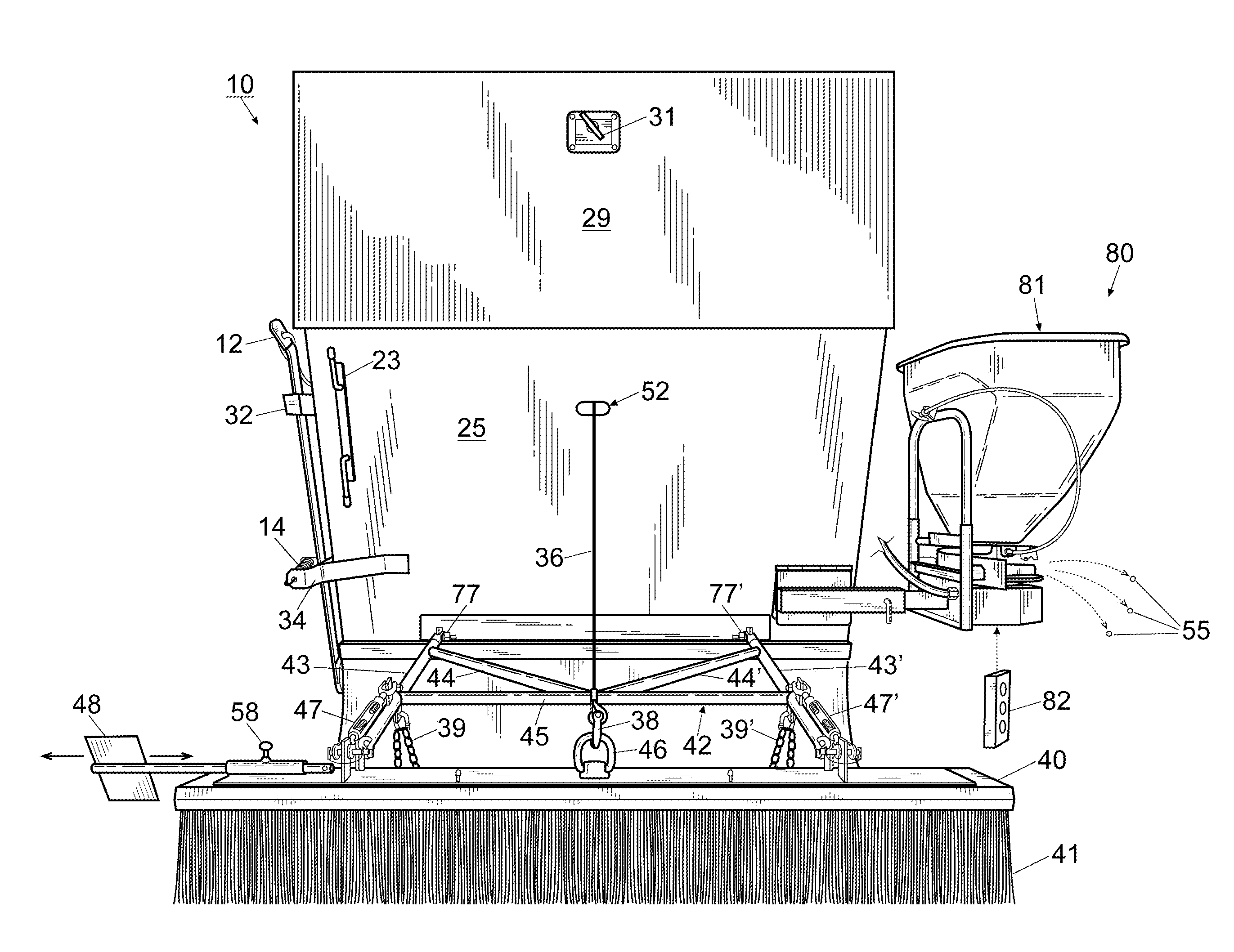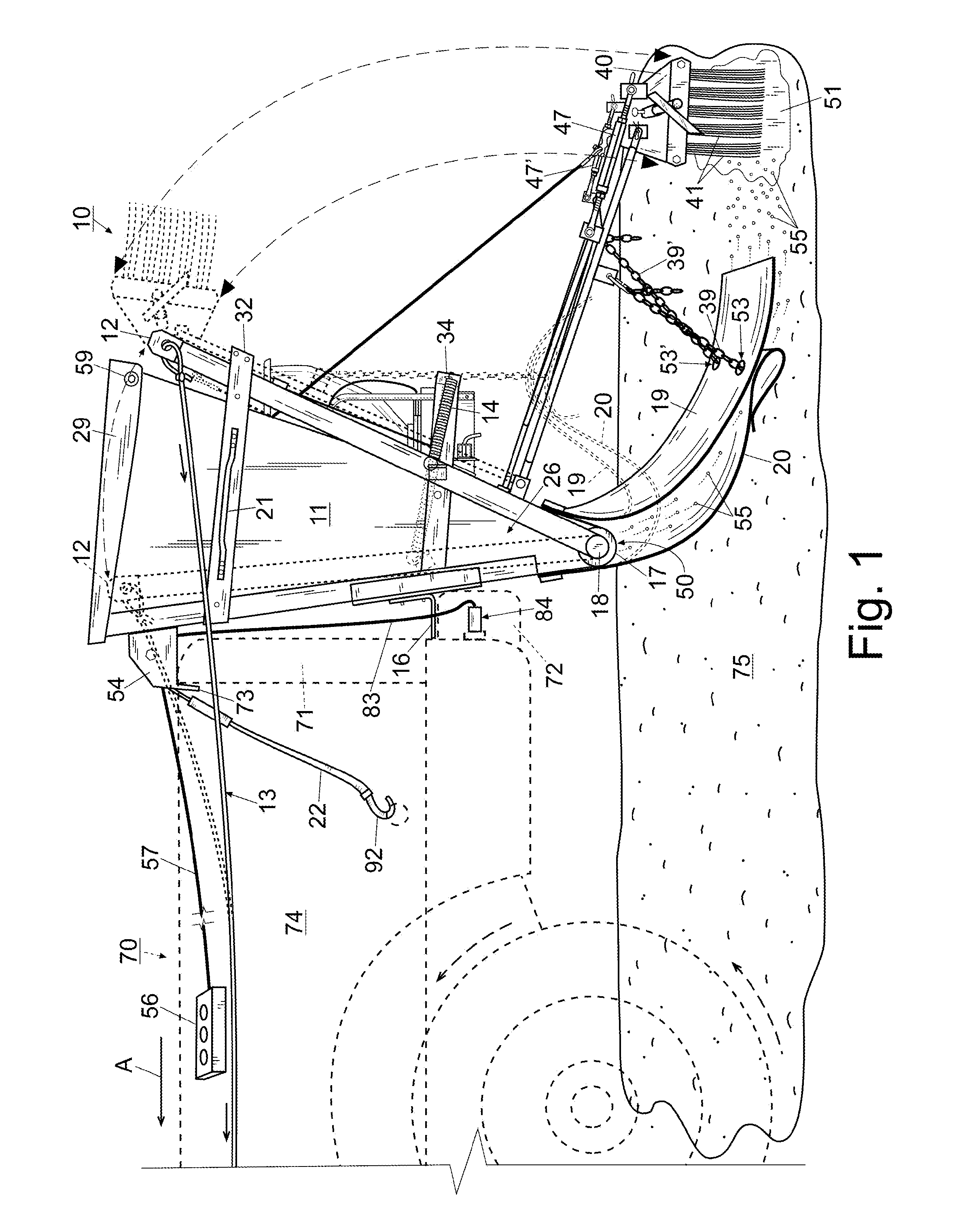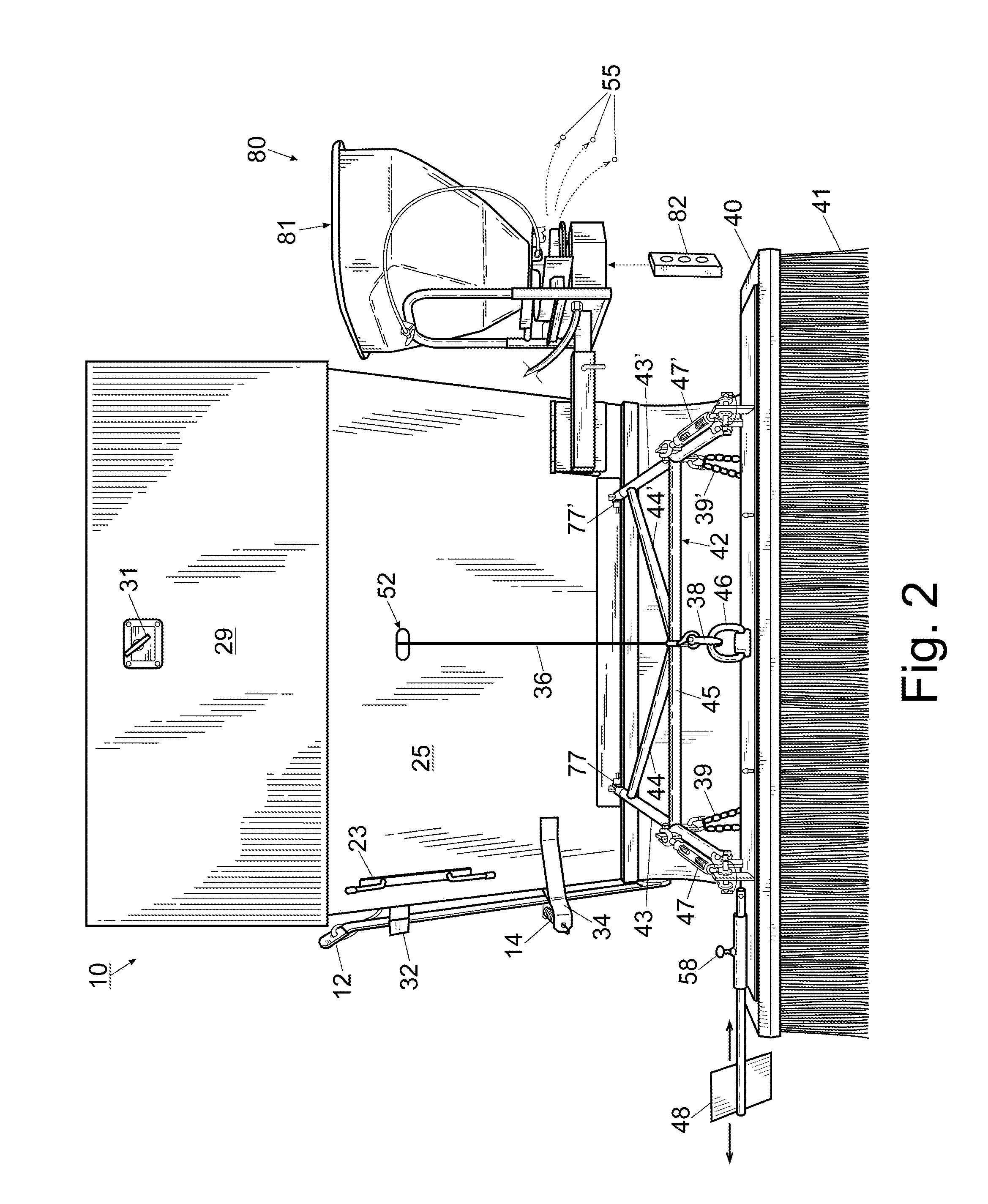Granular spreader and method
a granular spreader and surface technology, applied in the direction of centrifugal wheel fertilisers, ways, instruments, etc., can solve the problems of insufficient and uneven dispersion of granules, and achieve the effect of preventing “flying” and adding stability
- Summary
- Abstract
- Description
- Claims
- Application Information
AI Technical Summary
Benefits of technology
Problems solved by technology
Method used
Image
Examples
Embodiment Construction
[0025]For a better understanding of the invention and its operation, turning now to the drawings, FIG. 1 shows preferred granular spreader 10 affixed to tailgate 71 of conventional pickup truck 70 in schematic representation. Granular spreader 10 is used for surface spreading various types of small, fine particles such as oil absorbents, salt, fertilizers, ground clay and for other materials and purposes as needed. Preferred granular spreader 10 includes V-shaped hopper 11 formed preferably from 0.090 inches (2.28 mm) T-6061 aluminum sheets composed of front panel 24, rear panel 25 and V-shaped side panels 26, 26′ as shown in FIGS. 1-4. Lid 29 is also formed from 0.090 inches (2.28 mm) T-6061 aluminum sheets and pivotally affixed to hopper 11 with pins 59 (FIG. 1), 59′ (FIG. 3). Hopper 11 has a capacity of 500-800 pounds of granular materials such as a conventional oil absorbent however other granular materials may weigh more or less, depending on the particular material selected.
[0...
PUM
 Login to View More
Login to View More Abstract
Description
Claims
Application Information
 Login to View More
Login to View More - R&D
- Intellectual Property
- Life Sciences
- Materials
- Tech Scout
- Unparalleled Data Quality
- Higher Quality Content
- 60% Fewer Hallucinations
Browse by: Latest US Patents, China's latest patents, Technical Efficacy Thesaurus, Application Domain, Technology Topic, Popular Technical Reports.
© 2025 PatSnap. All rights reserved.Legal|Privacy policy|Modern Slavery Act Transparency Statement|Sitemap|About US| Contact US: help@patsnap.com



